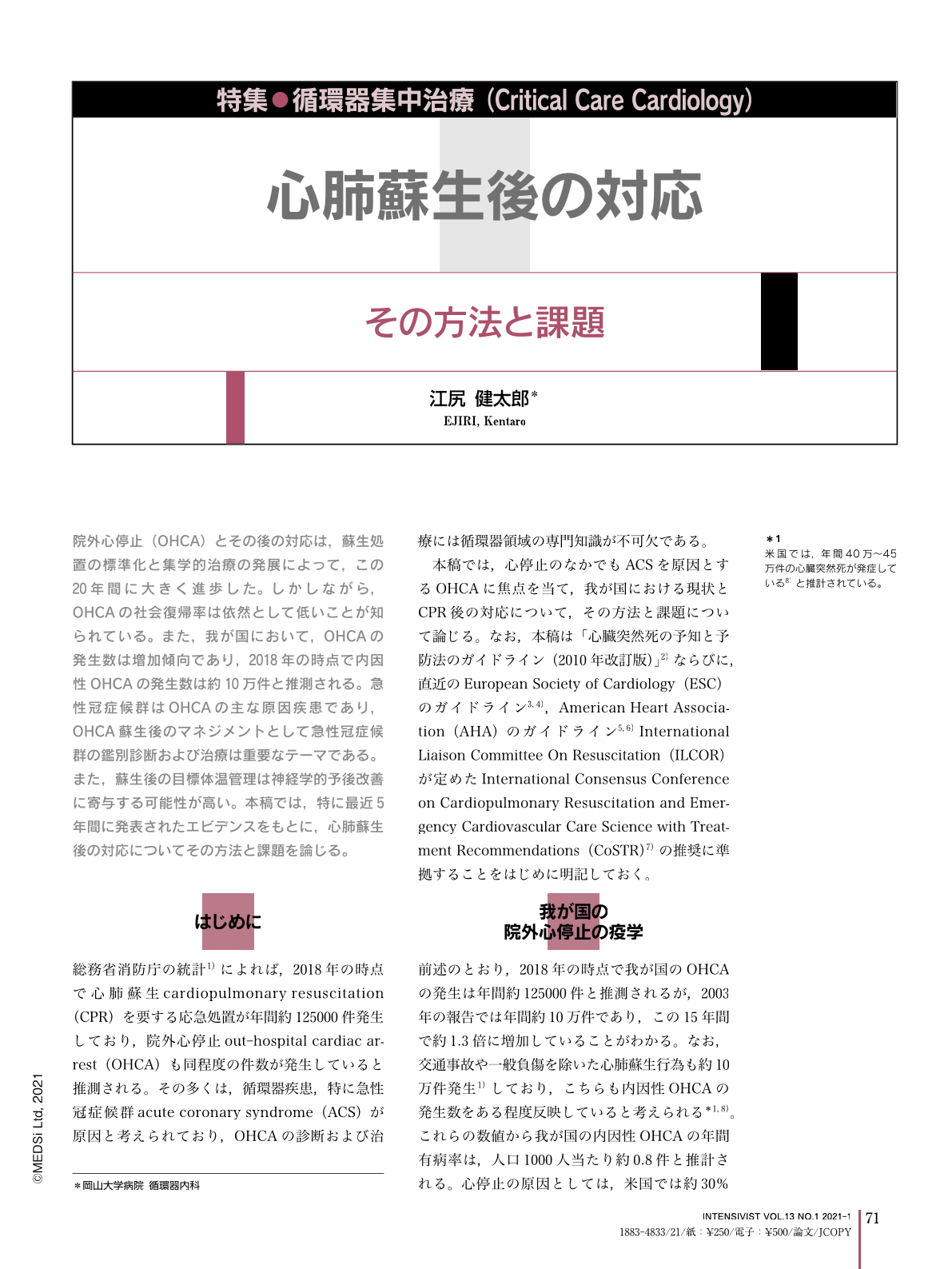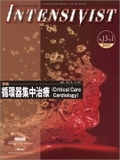Japanese
English
- 有料閲覧
- Abstract 文献概要
- 1ページ目 Look Inside
- 参考文献 Reference
院外心停止(OHCA)とその後の対応は,蘇生処置の標準化と集学的治療の発展によって,この20年間に大きく進歩した。しかしながら,OHCAの社会復帰率は依然として低いことが知られている。また,我が国において,OHCAの発生数は増加傾向であり,2018年の時点で内因性OHCAの発生数は約10万件と推測される。急性冠症候群はOHCAの主な原因疾患であり,OHCA蘇生後のマネジメントとして急性冠症候群の鑑別診断および治療は重要なテーマである。また,蘇生後の目標体温管理は神経学的予後改善に寄与する可能性が高い。本稿では,特に最近5年間に発表されたエビデンスをもとに,心肺蘇生後の対応についてその方法と課題を論じる。
For the past 2 decades, a therapeutic algorithm for out-hospital cardiac arrest (OHCA) patients was improved because of standardization of life support and intensive care for OHCA. No sufficient outcome, however, was obtained for survival with favorable neurologic outcomes in OHCA patients by the improvement. The incidence of OHCA is gradually increasing and the estimate of the annual incidence of non-traumatic OHCA in 2018 in Japan was 100,000 patients. Acute coronary syndrome is the leading cause of non-traumatic OHCA and the differential diagnosis and therapeutic strategies play an important role in post-resuscitation care. Current clinical trials brought new evidence, especially in the timing of coronary angiography after resuscitation and revascularization strategy in post cardiac arrest patients with multivessel disease. In some patients, mechanical circulatory support is required to maintain hemodynamics post cardiac arrest until recovery. Additionally, targeted temperature management is recommended to improve neurologic outcomes in post cardiac arrest patients, although there are some controversies. This paper aims to describe the current management, knowledge gaps and future perspectives of post cardiac arrest care based on high-quality evidence which published in the past 5 years.

Copyright © 2021, MEDICAL SCIENCES INTERNATIONAL, LTD. All rights reserved.


